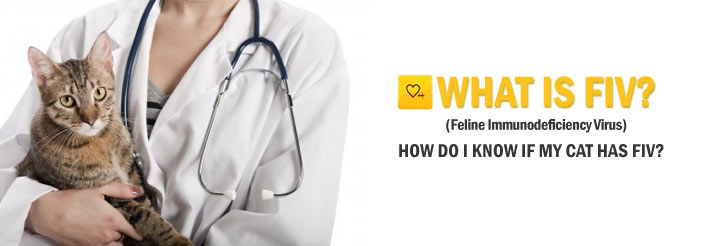FIV (Feline Immunodeficiency Virus)
 |
 |
Feline immunodeficiency virus (FIV) was discovered in the late 80ís after researchers began looking to see if there was a virus in animals similar to the HIV virus of humans. We now know that both viruses are part of the Lentivirus family of retroviruses. These viruses are species specific, infect an individual for life, and produce a slow progressive disease. People cannot get FIV from a cat, just as cats cannot contact HIV from people.
|
 |
The FIV virus is present in the blood, saliva, and cerebrospinal fluid of infected cats. The virus is dependent on its host and cannot live outside the cat. The most common mode of transmission is through the bites wound of infected cats. Casual contact is a less likely method of transmission. Potentially, infected Queens can pass the virus to their offspring. Unneutered male cats are the most commonly infected. These cats tend to be territorial and most likely to have been bitten by a carrier of the FIV virus. House cats that never come into contact with strays are the least likely to contact or develop FIV.
|
 |
It may take years after an exposure to the FIV virus for severe clinical signs to appear. About four to six weeks after exposure the infected cat may develop swollen lymph nodes and the white blood cell count declines. Some cats will develop fever, diarrhea, and anemia in the early stages. Other symptoms include gingivitis, respiratory infections, eye diseases, neurological problems, and general poor health. The symptoms are the result of the virusís ability to suppress the immune system. It does this by destroying a type of white blood cell called the T helper cell. There is a high correlation between FIV positive cats and FELV positive cats.
|
 |
The diagnosis needs to be made by your veterinarian. A blood test is used to determine if the animal is producing antibodies to the FIV virus. If antibodies are present it means the cat has been exposed. Your veterinarian may recommend testing any new cat that is being brought into your household. Kittens less than six months of age may test either false negative, or false positive. If they are incubating the virus, they may not have enough antibodies present to give an accurate positive test result. False positives occur when a queen passes antibody to the kittens through the milk. These kittens may also get the virus this way. Kittens who test positive should be retested at six months of age. Your veterinarian is the best person to advise you when and who to test.
|
|
 |
| † |




